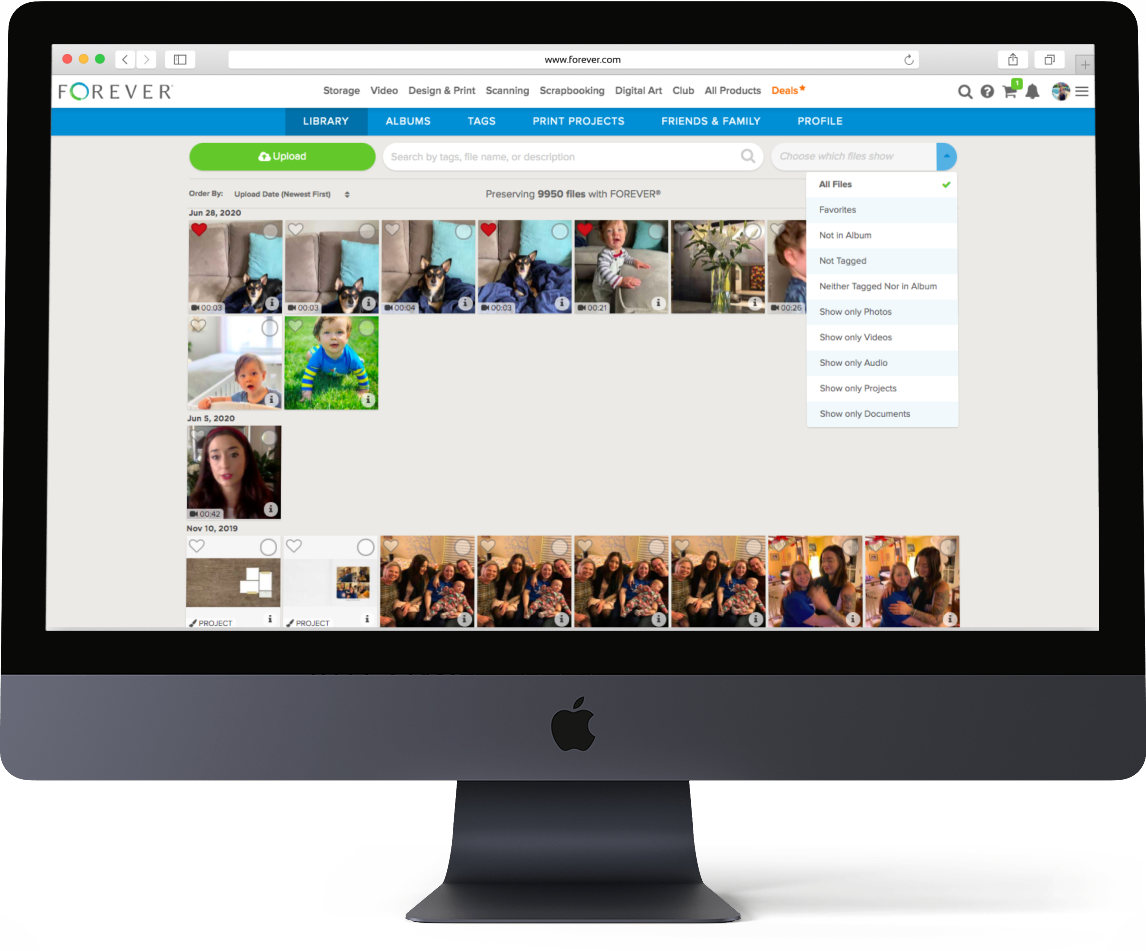Video at FOREVER
I was tasked with leading an effort that would provide customers with the ability to successfully store, share, and watch their beloved video memories, now and for generations. The design effort for this spike lasted about 2 months. I worked closely with FOREVER’s Development Leads, Vice President, Manager of Media Conversion, and CEO.
Background
FOREVER offers permanent cloud storage to help you collect, curate and celebrate your memories now and for generations.
My role involved three main foci:
Research: Explored and captured competitor uploading and streaming workflow on mobile and desktop.
Product decisioning: Met with existing customers and business stakeholders to identify goals and constraints and deeply understand the problem we wanted to solve. Major contributions to payment plans and streaming options.
Design execution: Captured UI touch points on both the product and marketing side to understand relevant real-estate.
Business Assumptions
Out of a board meeting came a number of assumptions that I was given to run. The concept was we would transcode all video to SD, or standard definition on upload for free playback. If a user wanted HD, Full HD, or 4K they would need to pay for a premium streaming plan.
We would transcode all video to SD upon upload for free.
If a user wanted HD or above they would need to pay for a streaming plan.
The plan would be tiered based on video quality.
Can delete original and store only transcoded copy.
Customers can choose playback quality on demand.
Information Gathering
By having customers pay for a streaming plan I really felt as though we were pushing business complexity onto the user, this is extremely atypical so I was a big advocate for bundling the cost of transcoding into our storage pricing.
Ultimately, our customers felt that storage was already too expensive. To bake in an extra cost on top of that could reduce storage sales. Additionally, through user research it was discovered that not everyone who stores video needs to stream it. They’d be happy to download the content and view it locally as needed. By making it a separate cost, it is an additional sales opportunity for our business and ambassadors.
I met with a variety of team members that could provide valuable insights including the vice president, the manager of media processing center who is an expert in media conversion, and our mobile team leads.
Competitor Research
I looked at our competitive landscape and worked to capture the entire workflows in detail to bring back to the team. I wanted to identify who offered streaming, what did it cost, and what was the streaming quality like.
It was useful to have other product flows on hand that way as I talked through some design suggestions with stakeholders I could easily pull up some samples to communicate the most common storage experiences.
I think we should always be looking to the future to inform decisions today so I pulled up a device list of phones recording 4K.
User Research
I looked into the devices our customers use and found 90% of android users were on a device that came out in 2015 or later. This means we can expect UHD to be the default camera resolution. If we proceeded with the initial business plan to play SD we could be losing quality and one main promise to customers is no compression.
I conducted onsite focus group session to understand customer needs. This was a way to get our direct sales group excited about the work we were doing and for the business to learn more about customer expectations.
I invited our top brand ambassadors into the home office and completed exercises to understand what videos they store, what they plan to do once the videos are uploaded, if they would anticipate any costs, and much more.
I started completing more mid-fi mock ups and piecing together prototypes based on internal feedback and customer input. Once I had some preliminary flows in place I continued testing.
I had users run through a prototype and then complete a survey to start testing the design solution that was forming. I wanted to ensure the model was clear and complete.
There were several research efforts associated with this process, sprinkled through various iterations. I conducted a series of unmoderated usability sessions using InVision. This targeted a panel of potential customers.
Design
Based on the user-research I conducted I realigned the team on the new direction for video.
FOREVER has a very large umbrella of products from desktop software, to mobile apps, to web apps, to storefronts, so it was important to identify the places that would need adjusting. I did not necessarily execute on all of these independently but at least captured and delegated.
The Solution
Above is an overview of the final solution.
The outcome was a framework that worked for our users and has stuck, this is still the model in place today. I able to successfully contribute to the pricing model through research and created a UI that was easy to use despite complexities that went along with this work-set.




























